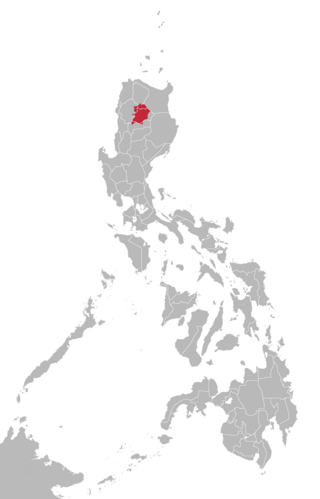Related Research Articles
Most languages of Europe belong to the Indo-European language family. Out of a total European population of 744 million as of 2018, some 94% are native speakers of an Indo-European language. Within Indo-European, the three largest phyla are Romance, Germanic, and Slavic, they have more than 200 million speakers each and together account for close to 90% of Europeans. Smaller phyla of Indo-European found in Europe include Hellenic, Baltic, Albanian, Celtic, Armenian and Indo-Aryan.
Ethnologue: Languages of the World is an annual reference publication in print and online that provides statistics and other information on the living languages of the world. It is the world's most comprehensive catalogue of languages. It was first issued in 1951, and is now published by SIL International, an American Christian non-profit organization.

The Maka or Makaa are a Bantu ethnic group inhabiting the southern rain forest zone of Cameroon. They live primarily in the northern portions of the Upper Nyong division of Cameroon's East Province. Major Maka settlements include Abong-Mbang, Doumé, and Nguélémendouka. Some Maka villages lie over the border into the Centre Province, as well.
The Njyem are an ethnic group inhabiting the rain forest zone of southern Cameroon and northern Republic of the Congo. In Cameroon, the Njyem live along the road running south from Lomié, passing the government center of Ngoyla and going as far south as Djadom. From there, footpaths extend to Souanke in northern Congo. Their territory lies south of the Nzime people and north of the Bekwel, both related groups. Ngoyla is the largest Njyem center. Souanke is equally important, but is a center shared with the Bekwel. They speak Njyem ("NJY"), one of the Makaa–Njem Bantu languages.
The Badwe'e are an ethnic group inhabiting the rain forest zone of southeastern Cameroon. They recognize themselves as the descendants of Edwe'e, the youngest son of Koo and the brother of Njeme and Nzime. The Badwe'e live south of Messaména in the East Province in a region south of the Bekol and both north and west of the Nzime. Their territory includes much of the northern and western border of the Dja Biosphere Reserve. They speak a dialect of Koozime, together with the Nzime.
Luhya is a Bantu language of western Kenya.

Kalinga is a dialect continuum of Kalinga Province in the Philippines, spoken by the Kalinga people, alongside Ilocano. The Banao Itneg variety is not one of the neighboring Itneg languages.
Wetarese is an Austronesian language of Wetar, an island in the south Maluku, Indonesia, and of the nearby islands Liran and Atauro, the latter island separate from the mainland of East Timor, north of Dili.

The Makaa–Njem languages are a group of Bantu languages spoken in Cameroon, the Central African Republic, Equatorial Guinea, Gabon and the Republic of the Congo. They are coded Zone A.80 in Guthrie's classification.
The Nzime are a Bantu ethnic group inhabiting the rain forest zone of southeastern Cameroon. The Nzime live along the road running south of Abong-Mbang, through Mindourou and Lomié, and forking to Zoulabot and Zwadiba. Their territory lies south of the Koonzime in Djaposten, east of the Badwe'e, north of the Njyem, and west of the Konabembe people, all related groups. The Nzime speak the Nzime dialect of Koonzime ("OZM"), one of the Makaa–Njyem Bantu languages.
Central Tibetan, also known as Dbus, Ü or Ü-Tsang, is the most widely spoken Tibetic language and the basis of Standard Tibetan.
Mijikenda is a Bantu dialect cluster spoken along the coast of East Africa, mostly in Kenya, where there are 1.9 million speakers but also in Tanzania, where there are 100,000 speakers. The name Mijikenda means "the nine settlements" or "the nine communities" and refers to the multiple language communities that make up the group. An older, derogatory term for the group is Nyika which refers to the "dry and bushy country" along the coast.
Nzime (Koonzime) is a Bantu language of Cameroon, spoken by the Nzime and Dwe'e (Bajwe'e) people. Maho (2009) lists these as two languages.
Buyu, or Buyi, is a Bantu language of Lake Tanganyika that is closely related to Nyanga.
Kayan is a dialect cluster spoken by the Kayan people of Borneo. It is a cluster of closely related dialects with limited mutual intelligibility, and is itself part of the Kayan-Murik group of Austronesian languages.
Lamaholot, also known as Solor or Solorese, is a Central Malayo-Polynesian dialect cluster of Flores, Indonesia. The varieties may not be all mutually intelligible; Keraf (1978) reports that there are 18 languages under the name.

Itneg is a South-Central Cordilleran dialect continuum found in the island of Luzon, Philippines. This language and Ilocano are spoken by the Itneg people in Abra.
Kimaragang (Marigang), Tobilung, and Rungus are varieties of a single Austronesian language of Sabah, Malaysia. The three varieties share moderate mutual intelligibility. Children are not learning it well in some areas.
Masela (Marsela) is the language of Marsela Island in southern Maluku, Indonesia. Regional varieties are distinct; Ethnologue counts it as three languages.
References
- ↑ Njem at Ethnologue (15th ed., 2005)

- ↑ Njem language at Ethnologue (25th ed., 2022)

- ↑ Jouni Filip Maho, 2009. New Updated Guthrie List Online